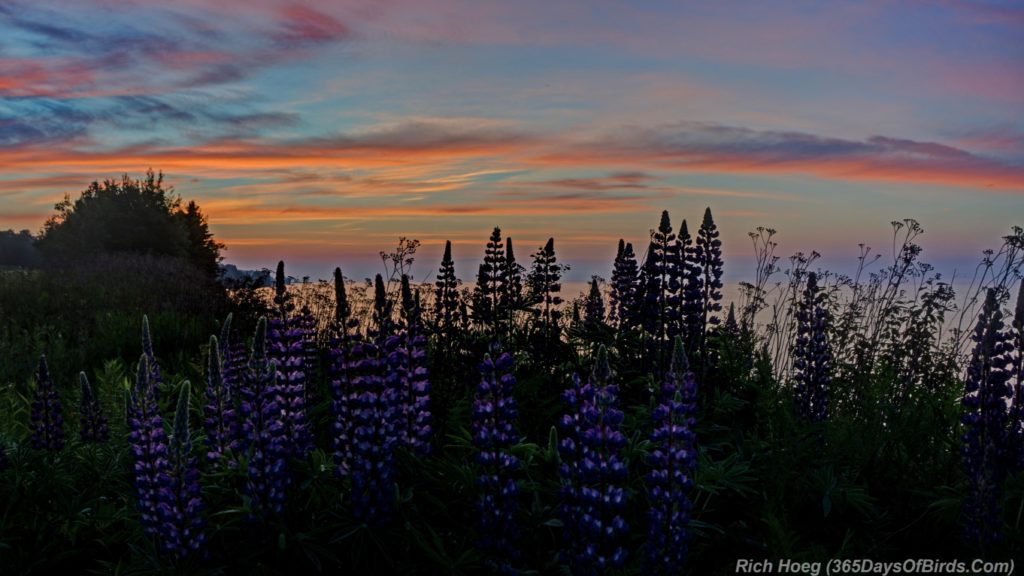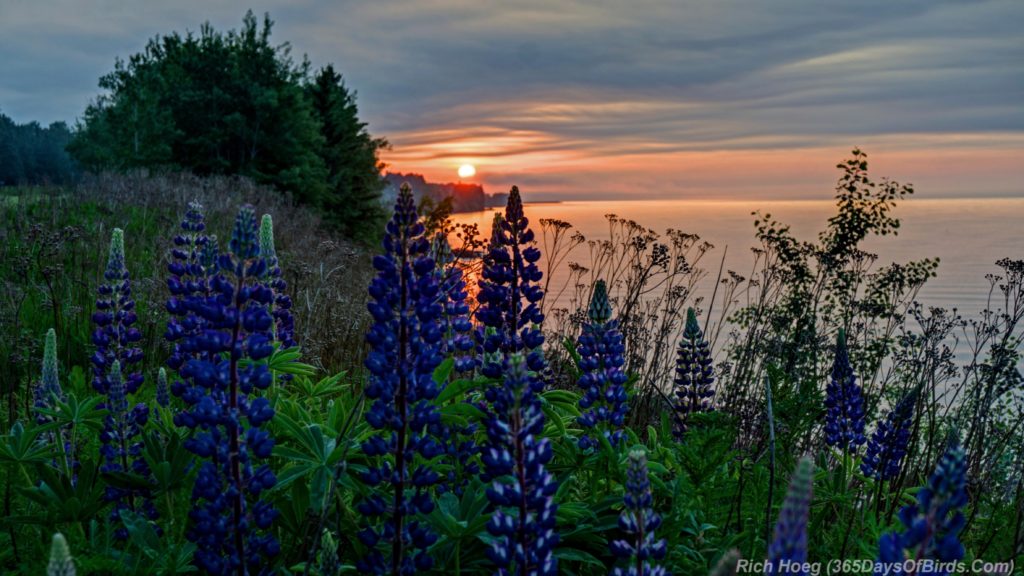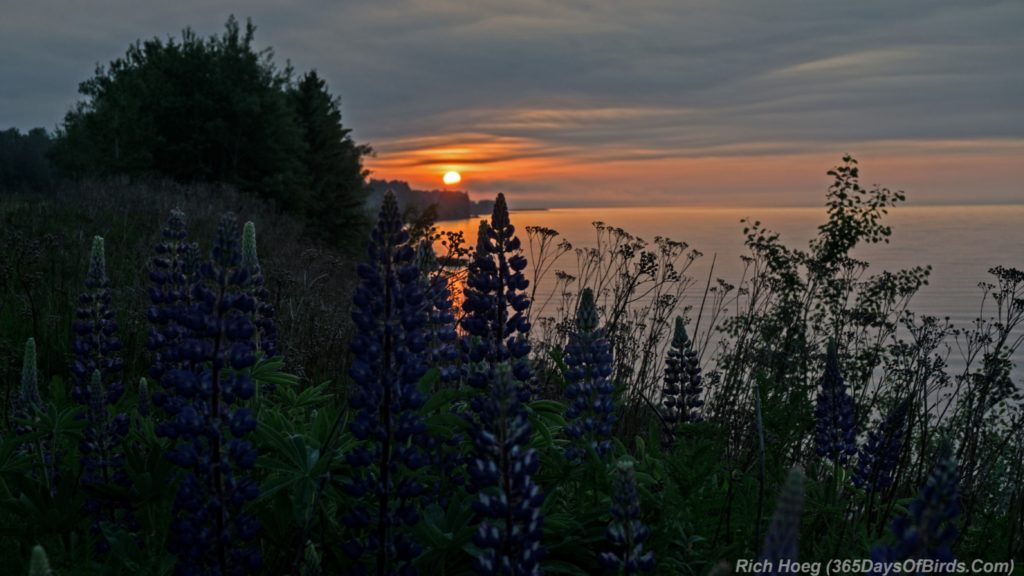Three nights ago I got up at 12:15 am to photograph Lupines in the moonlight. Well, the following morning at 4:45 am I was out on the shores of Lake Superior awaiting the sunrise to photograph my favorite flowers. The first photo was taken 20 minutes before sunrise, whereas the final two were a few minutes after dawn (about 5:15 am).
Given the challenging light, I combined 3 images via HDR into one photograph such that I could both photograph the sun (or sky), but also bring out the colors of the flowers. This leads to the question, which photograph best reflects reality? Surprisingly the answer is not as easy as one might think. Right after the sun popped above the horizon, if a person looked directly at the sun, the flowers would only appear as silhouettes. However, if one made sure not to look directly at the yellow orb, the color of the flowers would be obvious. Thus, in my mind all the photographs are realistic.
20 Minutes Before Sunrise: Lupines on the shore of Lake Superior

———-
5 Minutes After Sunrise: Lupines on the shore of Lake Superior


Are you using canon sx60? Special settings? Pictures are beautiful.
Bird photographs use my Canon Sx60, but landscape and night time photographs use my Sony NEX-5t. The Sony is mirror less camera and like the Sx60 does not cost an arm and a leg. In my case I purchased the Sony NEX-5t (with kit lens) about 20 months ago via Amazon for $299. Sony mirror less cameras are respected for their low light capabilities. Another little known fact is Sony manufactures sensors for many, many camera manufacturers. However the end result will still always depend on the information processed from the sensor and the optics involved. Cameras these days are essentially computers with optics.
With respect to bird photography and my Canon Sx60, without getting into extreme detail … I never use the auto setting. My goto setting tends to be exposure priority with a setting ranging between 1/500th a second to 1/1250th of a second. Normally I let the camera pick an ISO setting, but if the ISO goes above 400 I will force the ISO to 400 and look for a very motionless bird. The continuous shutter setting is very important in this case as I end up with lots of blurry pictures. In terms of post processing I do very little. I do not own Photoshop, but I do have the much lighter version, Photoshop Elements. About the only items I ever tweak are shadows, highlights,and clarity.
Thanks for your kind comments.